A few days ago we dedicated an article to the Valdevez Challenge, a tournament that was played in the Middle Ages to avoid a battle between León and the nascent Kingdom of Portugal that would have left both armies diminished before a common enemy, the Almoravids. We also commented that it was not an isolated case and we reviewed another example, the Bordeaux Challenge of the 13th century, which had to confront Carlos de Anjou with Pedro III de Aragón for the throne of Sicily; I should, conditionally, because finally there was nothing. Let's see how it went.
That kingdom did not limit its territory to the island but extended to the south of the Italian peninsula since its foundation in the year 1071 by Roger II, jarl rogeirr (great count) descendant of Hialt, Viking leader settled in Normandy in the 10th century. Roger was a vassal of his brother Roberto Guiscard, who had received from Pope Nicholas II the titles and appointment of count of Calabria, Apulia and Sicily -that is, , the go-ahead for the conquest of southern Italy, although they were not actually Holy See territories- in exchange for Norman support against Antipope Benedict X.
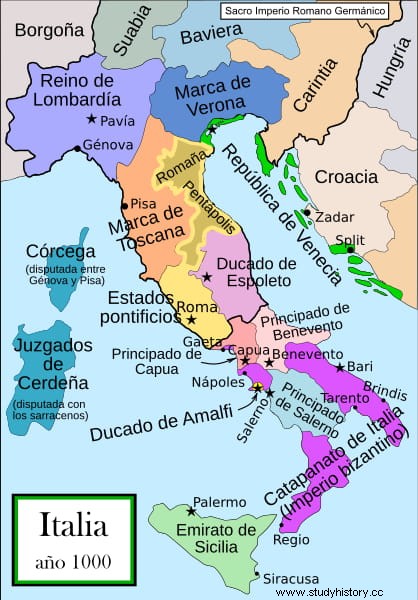
Guiscard first took over the Byzantine Catapanato, which extended from Naples through Calabria and Puglia (the toe and heel of the boot), to later jump to the Emirate of Sicily and take it from the Muslims, leaving the operations in the hands of his relative.
Roger was able to carry it out thanks to the internal division between his opponents, some of whom even allied with him. The campaign lasted almost two decades because the invaders had few troops; but it was completed in 1090, thus giving rise to the new kingdom. Since the majority of the population was Greek and Muslim, Roger applied a policy of religious and ethnic tolerance that integrated everyone into political life, which allowed him to win over the people; he thus achieved peace and stability, establishing the Hauteville dynasty.
However, this was later replaced by the Hohenstaufen when Henry VI, head of the Holy Roman Empire, took over the island by marrying Princess Constance, heir to the island throne because her brother William II had no children.
This shook the entire peninsula because it was part of the war that the Ghibellines, supporters of the imperial authority in Italy, maintained against the Guelphs, who claimed that of the Papacy. Henry refused to swear allegiance to Pope Clement III and the latter, wary of losing the properties of the Church in Sicily, decided to support the claims to the throne of Tancred of Lecce, illegitimate son of the late Roger II, thus promoting the return of the Hautevilles. .
The aspirant led a rebellion that succeeded in 1189, allowing him to reign as Tancred I. The emperor had to retire, but would return eight years later to reclaim the throne, ending the Norman presence on the island forever. His son Frederick II, a peculiar erudite and eccentric character who also received the imperial crown, continued the war against the Papacy.

Federico had a large offspring, but it was Manfred, a bastard, who managed to succeed his brothers due to their lack of offspring. However, that condition, together with the alliance he signed with the Saracens, caused Pope Alexander IV to excommunicate him, declaring his coronation null and void. This led Manfred to organize a coalition against his enemy in the central and northern regions of Italy, fueling the war between Guelphs and Ghibellines.
As the operations were adverse to him, Urbano IV, who was a native of Troyes, asked Luis IX of France for help and offered him the crown of Sicily. The Gallic monarch was not interested, so the pontiff then turned to the younger brother of the former, Charles of Anjou, Count of Provence, who did accept.
But things would get complicated. Not because of the death of the Pope, whose successor, Clement IV, continued the same policy maintaining the offer, but because in 1262, Constance II, daughter of Manfred, married Pedro, son of King Jaime I of Aragon. Thus appeared another powerful enemy and the pontiff began to preach a Sicilian crusade that gave special legitimacy to the army of Charles of Anjou.
This, indeed, was mobilized and in the battle of Benevento (1266) not only defeated Manfred but believed to settle the problem when his opponent died in the fight. Charles traveled to Rome so that the Pope could crown him king of Sicily, thus beginning the Angevin dynasty and forging a small Mediterranean empire that would be as ambitious (it aspired to restore the greatness of the Western Roman Empire against the Byzantine one) as it was ephemeral. 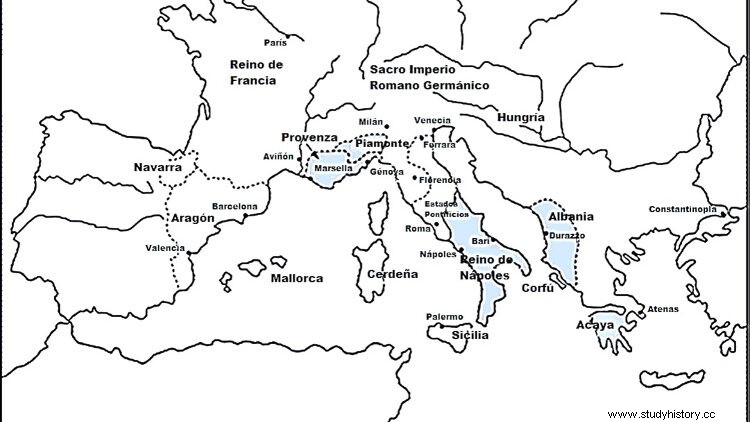
The new monarch met with the claims of the Duke of Swabia, Conradin of Hohenstaufen, adolescent son of Conrad IV and therefore Manfred's nephew, who even had the support of the King of Castile, Alfonso X the Wise> , as he aspired to the imperial crown. Two years later both sides met at the Battle of Tagliacozzo; Conradin ended up prisoner and executed, with what finally seemed expeditious the reign of Carlos, especially when he also occupied Durazzo and Albania, placing the capital of his new Sicilian kingdom in Naples.
But not. On the one hand, the next one to claim rights appeared:Constanza, the wife of Pedro de Aragón, whom Conradino had named heiress. On the other hand, the French government in Sicily was despotic, monopolizing the civil service, imposing a heavy tax burden and confiscating properties from Sicilian landowners, who lacked supporting titles because it was not the tradition to have them.
Some of these nobles channeled popular discontent into a rebellion, which eventually broke out in the spring of 1282. Known as Sicilian Vespers , began in Palermo at the sound of the bell with the extermination of the Gallic garrison and continued to other towns on behalf of the Hohenstauffens, who continued to enjoy general sympathy.
It was a particularly bloody episode, as the Sicilians took revenge for the frequent abuses of the French soldiers. There was the extra circumstance that several of the noble leaders of the revolt had had to go into exile in the court of Jaime I of Aragon, who maintained a tense border rivalry with France. And besides, Jaime had been succeeded by the current king, Pedro III, the husband of Princess Constance of Hohenstaufen, custodian of the right to the Sicilian throne, as we saw.
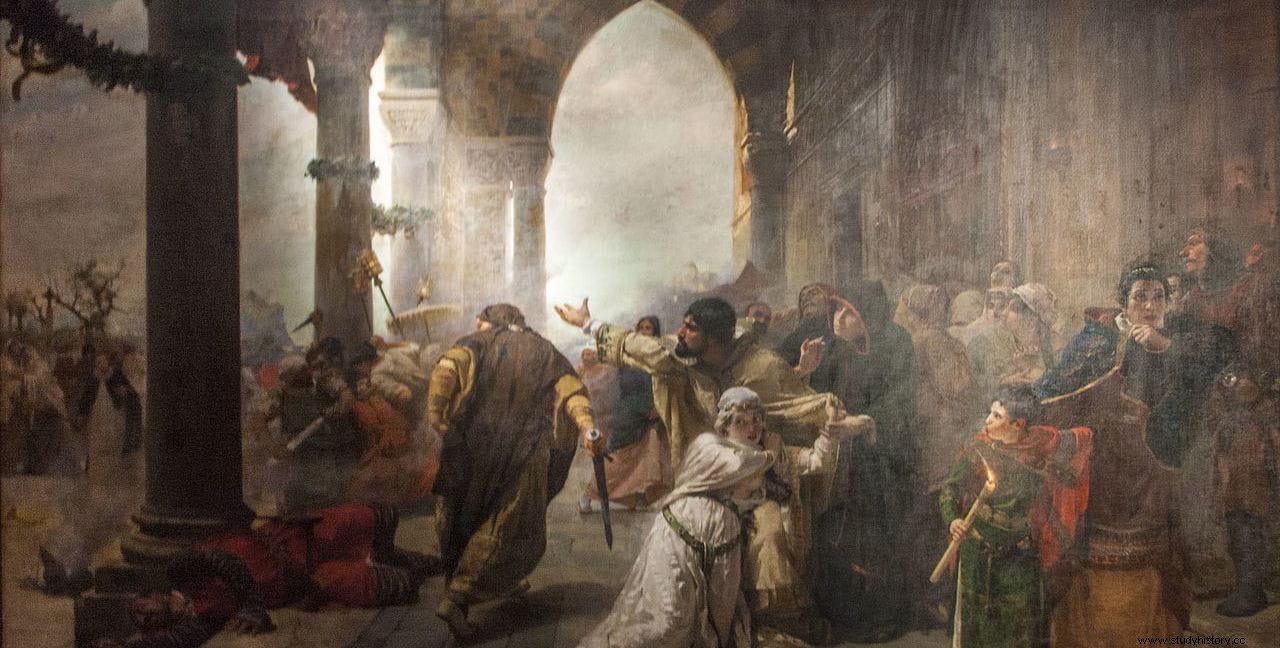
The insurrection caught Charles of Anjou by surprise, who was preparing the conquest of Constantinpola in his campaign against the Byzantine Empire - which some authors believe financed the revolt - and he was unable to prevent it. The French were massacred, and except for Naples, which the Angevins held, Sicily organized a republic divided into communes, in the style of central and northern Italy.
Now, she was defenseless against a possible reaction, so Martin IV, the new pope, was asked for help... who refused because he was also originally from France. Then, an embassy traveled to meet Pedro III of Aragón to offer him the crown in exchange for protection. He accepted and on September 8 he was crowned in Palermo. The Pope not only did not want to recognize him but two months later he announced his excommunication.
The insular army was defeated in Magliano di Marsi, but the final confrontation took place in Messina, where the Aragonese troops definitively defeated the French, causing ten thousand casualties and making them no longer able to recover the island. Carlos, yes, kept the south of the Italian peninsula and as it was the continental part of the kingdom he continued to call himself King of Sicily.
After the naval battle of Nicótera (October 1282), in which Pedro de Queralt's squad destroyed the Angevin, an unusual action was carried out by several hundred Almogavars:under the command of Jaime Pedro, illegitimate son of the Aragonese sovereign , stormed the arsenal of Catona (in Reggio) at night and annihilated the garrison, including Pedro de Alençon, nephew of Carlos de Anjou.
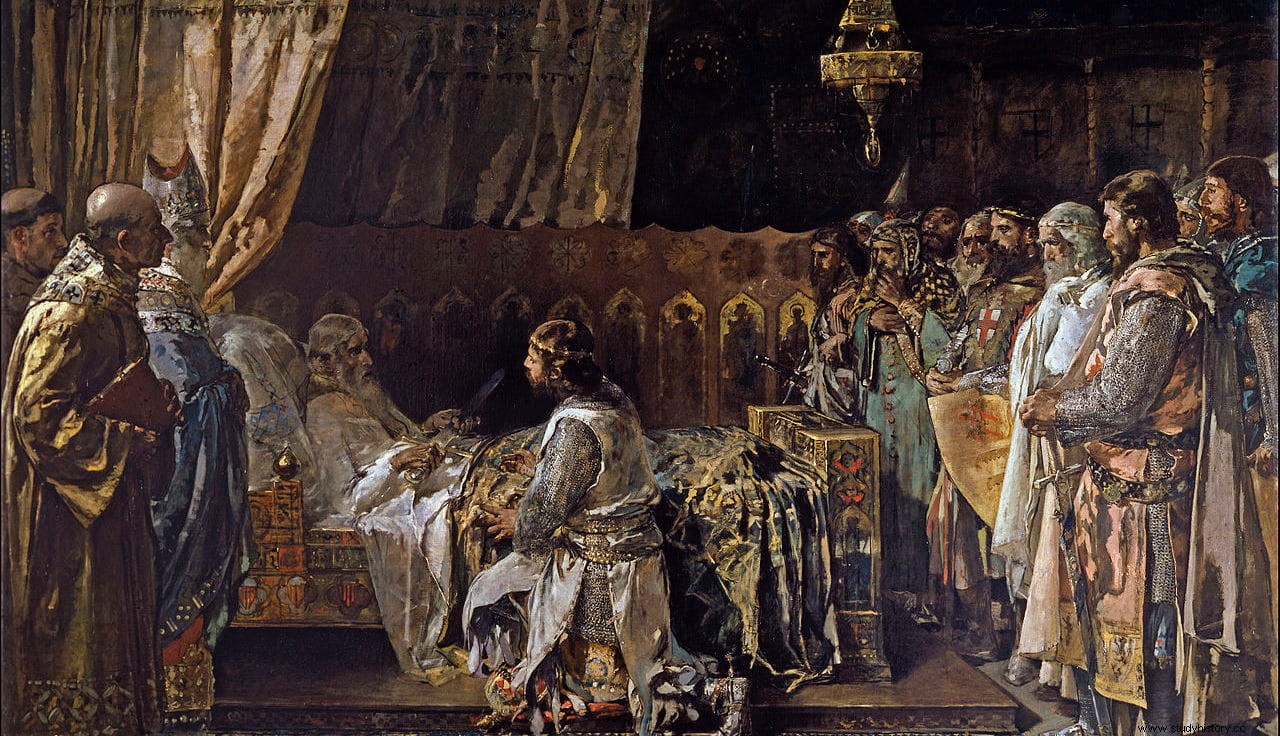
This outraged his uncle, who accused his rival of dishonest behavior, outside the chivalric code, thus originating the tradition - doubtful, like all - of the aforementioned Bordeaux challenge; Pedro would have accepted it, despite his superiority on the battlefield, to restore his reputation because, remember, he was also excommunicated. The proposal consisted of a tournament to be held on June 1, 1283 in that city, neutral territory because at that time it belonged to Edward I of England, who would act as referee.
Each contender could go accompanied by only a hundred knights, but when Charles of Anjou arrived in Bordeaux on May 15, he did so together with Philip III of France, who was also his nephew and brought an army of twelve thousand men with the purpose of capture the Aragonese king.
He had sailed from Sicily to Cullera, the starting point of his journey on horseback to the indicated place. On the way he met in Tarazona with his son Alfonso, who informed him that the English king refused to take part in that but admitted the celebration of the tournament in his city. He also warned him of the betrayal of the French troops, which put Pedro in a position:either he also took his host -a whole logistical and strategic problem- or he showed up without anyone noticing.
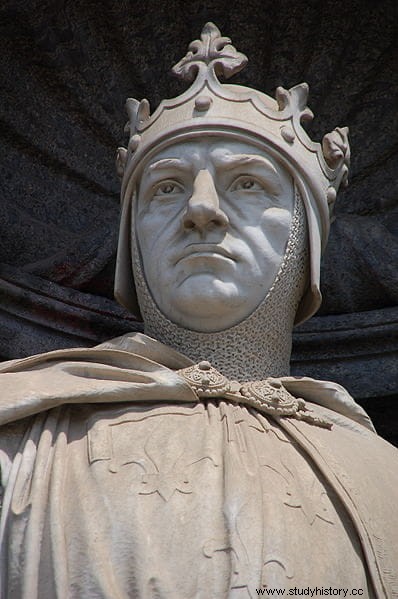
He chose the second option and, together with some of his best gentlemen (his in-law Blasco de Alagón, the Sicilian Corrado, the mayor of Barcelona Lanza, and Bernat de Cruilles y Peratallada, plus his father, Gilabert IV), made the journey disguised as a servant of the muleteer who was guiding them, Domingo de la Figuera.
They managed to enter Bordeaux incognito the day before the appointed date. In the morning, Pedro sent word to the seneschal of the Duchy of Gascony, Jean de Grailly, who was the arbitrator chosen to replace the English king, to go to the palenque accompanied by a notary public. This was done and, once everyone was there, the Aragonese monarch revealed his identity, demanding that his presence for the tournament and his protest for the ambush they had tried to set him be recorded in writing.
Likewise, he demanded that the victory be recognized, as his rival had violated the terms of the agreement. He then left the city while Jean de Grailly went to report to Charles of Anjou, who, fearing an ambush, also left Bordeaux the next day. Of course, like the other, he claimed victory.
In short, the tournament was never held in the strict sense and if the French wanted to recover Sicily they would have to renounce that judgment of God to do it by land means, in a conventional war. But there they were defeated on all fronts:by land, Philip III's army failed in its attempted invasion of Catalonia; by sea, the Angevin fleet was again battered in the Gulf of Naples. In this way, the end of the conflict came and the Kingdom of Sicily was definitively under the orbit of the Crown of Aragon first, and Spain later, until the first quarter of the 18th century.
